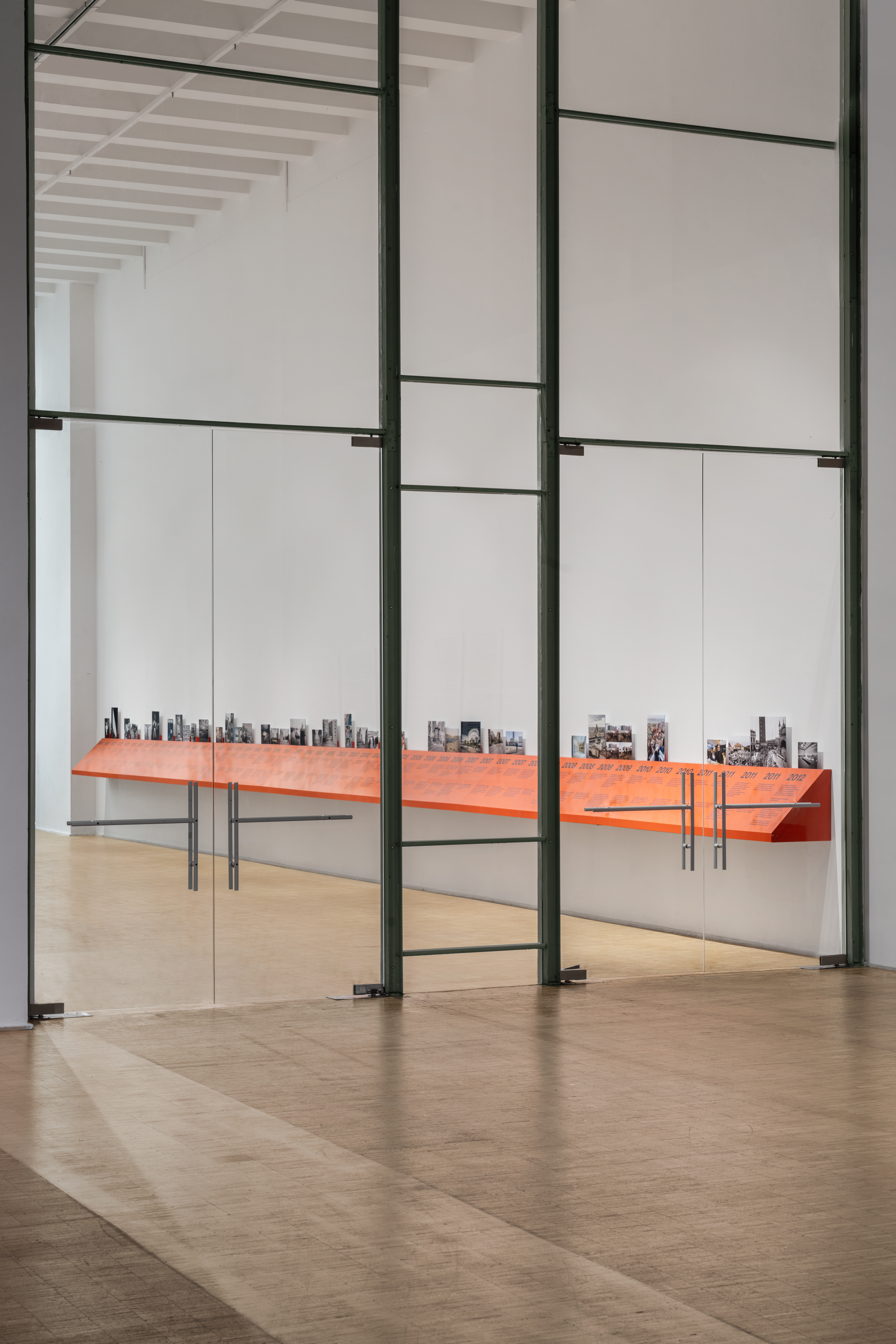The exhibition at Triennale presents Gabriele Basilico’s work on Milan to the public. Basilico loved to explore urban spaces, gradually approaching the architectural subject. His narrative emerged through a series of close-up shots, capable of conveying the sense of architecture and the surrounding context. The 13 photographic projects exposed, each consisting of a coherent series of images of a specific part of the city, are presented to the public with the same logic. The viewer moves through the exhibition spaces, traversing the entire urban landscape generated by the photographs.
The exhibition is divided into different fields marked by the structural lines of the space. Highlighted by the dark color that accentuates the ceiling of Palazzo dell’Arte and extends down to the pillars — some of which were created specifically for the exhibition — these structural elements detach and isolate the white fields that host the images. This creates a play of perspectives and visual fields, where the large black frame progressively defines the space, following the author’s shots of the city. The layout guides the viewer towards a closer look, enhancing each individual photograph while simultaneously opening up a view of the complete series of images.
As in a large panopticon, by observing the photographs arranged on the surrounding walls from the central empty space, a shared point of view emerges: the author’s gaze, along with ours, on the entire city.
Brief texts by the curators accompany the images on an additional level, as a narrative line that runs parallel to photography, emerging from the vertical plane of the images thanks to a three-dimensional red lead-colored support that contextualizes each series in chronological and spatial terms.











